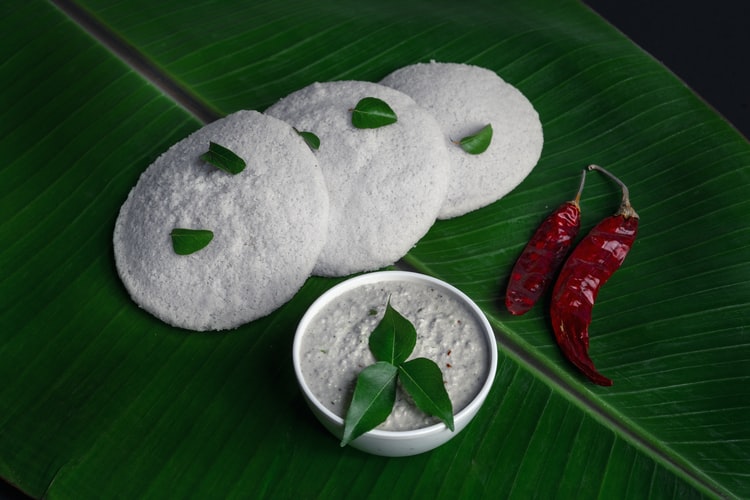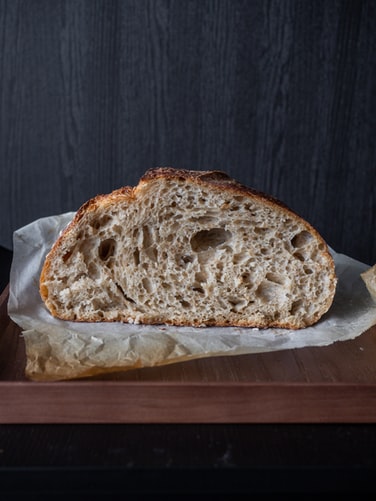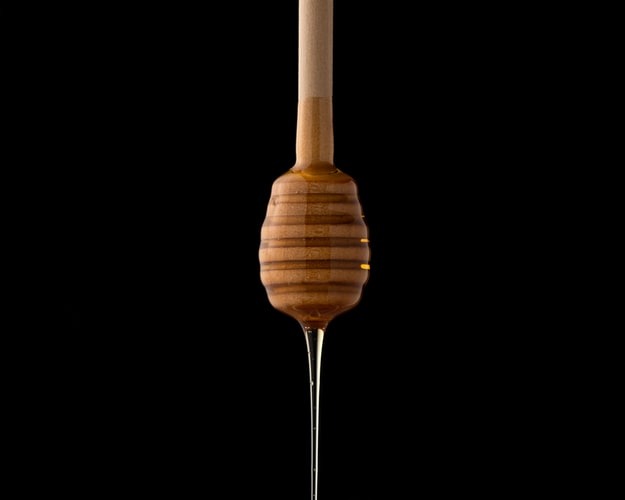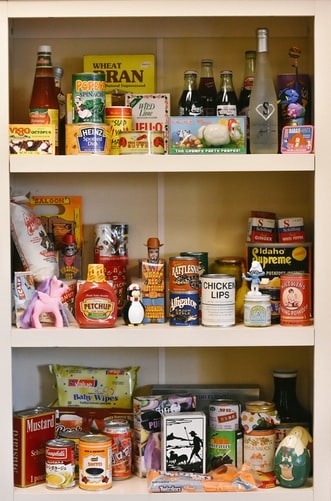About The Author
Hello! From Chuchura (in Hooghly District) and a foodie, I created this blog with a mission to preserve the food of the land; with a message to encourage and promote clean and real food. I hope you enjoy and gain out of this blog, happy reading!
Looking forward to read and hear your feedback.
Healthy food in India seems to have taken a backseat, even though everyone around believes in the mantra – ‘Eat right to stay fit’.
Yet, what baffles me is the misinformation around. India gave Ayurveda to the world. Yet, for the last couple of decades we have embraced the Western food habits like never before.
As I sit down to write this, many Indians on Instagram are going crazy on Turmeric Latte and Golden Milk. Haldi Doodh guys, come on! A recipe that is more than a thousand years old and prescribed in Ayurveda.
Eating Healthy Food In Indian Conditions
This article is all about exposing these misconceptions and sharing with you healthier alternatives that can make your life healthier and better for the long run.
Before you read further, remember – you are living in India, and the climatic conditions in the country are different from the climate in the West. So it is only natural that your food habits, the food you consume will vary.
Avoid Cornflakes, Eat Whole Grains Instead
Cornflakes was initiated by Kellogs (an orthodox Christian) to decrease libido and sex drive. Marketing, and the money from the church ensured that cornflakes become a global phenomenon in a short time, thanks to sponsored studies by leading publications in the West.
The reality is cornflakes is a processed food. They contain lesser nutritive value and does not keep you full for long. As per Practo, the glycemic index of corn flakes is very high (at 82) which indicates higher chances of diabetes, heart problems, weight gain and obesity.
Many consume cornflakes on a daily basis. This goes against the eat healthy, stay fit mantra.
Alternative to Cornflakes
The best alternative is idli which is prepared from fermented rice and lentils. Extremely healthy, inexpensive and tastes awesome with chutneys. And a dosa!

English/Continental Breakfast is a Strict ‘No-No’
English breakfast is catching the fancy of the youth of the country who have disposable income. Tags of healthy are very common with pictures posted on Instagram.
While one serving per month may not harm you, making it a daily or twice-a-week affair can cause discomfort in the long run.
Indian conditions do not suit English breakfast.
Remember, the bacons and sausages are processed chicken and consist of parts that are either discarded or sold to hotels at very low prices. Processed food contain high salt content.
Not to forget the juices are loaded with sugar. Salads come loaded with mayonnaise and that means a lot of refined flour and additives to your body.
Why would you put so much stress on your body first thing in the morning?
Alternative to English Breakfast for Healthy Food in India
Paranthas, chapati, dosa, idli are excellent food choices that are not loaded with sugar, oil and salt. Each of these are suited to Indian conditions, filling and inexpensive.
Accompany the paranthas and chapati with a non-spicy vegetable curry. For idli and dosa, consider sambar and chutneys.
Did you ever try out besan ka chilla? Or a gola ruti?
Eat a Fruit, Don’t Juice or Shake It
If you have teeth, do yourself a favor – take a fruit, chew and eat it. And eat fruits that are in season.

When you juice a fruit, you remove most of the fiber content from it. Add sugar to it for taste and you intake a lot of sugar in one single go.
Fruit shakes are unhealthy. Milk and fruits are a bad-bad combination. As per Ayurveda, milk (and milk products) and fruits are a bad combination. Best to avoid!
Not to forget that most juices and shakes are prepared in an electric mixer which produces heat in the process. This heat destroys the micro-nutrients in the fruits.
It has been scientifically proven that a fruit is absorbed better than a glass of juice.
Do Not Eat a Fruit After a Meal
Unless it is citric (except lemon), eating a fruit before meals is always recommended. Eating fruits after meals is a bad practice and can lead to health issues in the later part of your life.
When you eat food, acids are secreted to break down and digest the food. When you immediately eat fruits after a meal, the acid reacts with the enzymes of the fruit resulting in a series of harmful chemical reactions.
Best Time to Eat a Fruit
Always eat a fruit on an empty stomach. You can have it for breakfast.
Eat a fruit (non-citric) before your meals.
Have a fruit in the evening as snacks instead of oily pakodas and samosas from the office canteen or neighborhood shops.
Dairy & Non Veg
I have a lot of recipes on this site that use curd with meat/fish/egg. It gives a nice texture and tang to your gravies. This is fine now and then.
However, according to Ayurveda, this is unhealthy in the long run. Modern studies seem to accept this as well.
Eating curd everyday is a bad practise. Curd needs to be eaten in moderation depending on your body type (there are three body types as per Ayurveda – vata, pitta, kapha). Curd can decrease your digestive fire (called “Agni” in Ayurveda) leading to issues like indigestion.
Salads
According to Ayurveda, vegetables should always be cooked and never had raw, with a very few exceptions.
Ordering a salad at a restaurant or cafe thinking you are doing a lot of good to your health is completely wrong. Salads are mostly loaded with sauces that are heavily dosed in salt and sugar, among others.
Get Your Groceries Right
The ‘eat healthy, stay fit’ mantra starts with making the right choices when you go to the neighborhood grocery store, hypermarket or supermarket.
Vegetables & Fruits – Healthy Food in India Suggestion
All that glitters is not gold. This age old adage proves true when you visit a supermarket or hypermarket in your city.
- Do not fall prey to vegetables and fruits that have a glossy feel. The shine is due to a wax coating to prevent the vegetables and fruits from rotting. Many might argue that the wax is food grade, but it is not always so and there is no way to instantly verify the same.
- Avoid exotic and imported vegetables and fruits. They have most probably made a long journey across seven seas. This long journey impacts their nutritive content.
- Buy local, eat seasonal. Always buy fresh produce from the local market. The local market has a regular supply from the nearest warehouse. Cauliflowers might be available round the year, but the most organic ones are available only during the winter. This is just an example and holds true for every vegetable.
Breads
I smirk in my mind when people reach out for the brown bread on the shelf. Or ask the shopkeerper if he has a supply for the same.
Most brown breads available locally in India are worse than white bread.
Why do I say so? Because white flour is mixed with caramel to produce the brown color. Basically, what you are eating is white bread plus caramel.
What should you do about it? Check the price and you will know. If the price is a few rupees more than white bread, then the brown-looking bread is exactly what I have explained above.
Instead, go for whole wheat bread from a reputed bakery. Not sure? Avoid! Try a crepe or chilla, takes hardly 15 minutes to cook.

Spices
Ah! My favorite cooking ingredients, that I am studying a lot about these days.
Powdered spices contain adulterants. I am not saying that this holds true for all brands, but there is no way to know unless you have bought them, unpacked them and done some tests on.
Thankfully, you live in India that is considered the spice capital of the world. You have a lot of whole spices available locally. It is wiser to buy whole spices and prepare a spice mix at home as per your requirement. It does not take a lot of time if you have a mixer-grinder.
I generally prepare my spices on the go! Takes hardly a couple of minutes.
Better flavors, guaranteed!
Healthy Food in India is Dependent on The Oil You Use
As much as possible, avoid refined oils. Refined oil is bad for health, lack any nutrition and is produced through not-so-healthy processes.
The thumb rule is to consume non-refined, cold pressed oil. And consider traditional oils like mustard, coconut, groundnut, sesame and golden fats like desi ghee.
Avoid olive oil if you are cooking Indian cuisine. Use olive oil for salad dressings only. Remember the brand of olive oil you buy, because many products on the shelves of grocery stores are a blended product, which I would not recommend for the amount of chemical process it has to undergo.
If you need more information on the subject, you can consider this guide to healthy cooking oil in India.
Sugar & Salt
Seasoning elements like sugar and salt are an important part of our daily food habits.
These white granules or crystals have proven to be harmful to the human body. The lesser, the better!
Anything refined is potentially stripped of its natural goodness. Hence, always try to embrace healthier alternatives that are available in the market in abundance.
If you want to add sweetness to your dish, add natural and healthy sugar alternatives available in Indian markets in abundance. This can be honey, jaggery, misri and more!
When it comes to salt, use rock salt. If you are worried about missing out on iodine, you can use both alternatively.
Honey
Most honey available in the market today are not naturally produced but artificially made from sugar (instead of flowers) using bees as a medium. This is done to meet the surging demand.
Instead, go for natural and unprocessed honey. There are several brands online that sell raw and unporcessed honey.

I also find many people add a teaspoon of honey to hot lemon water early morning, thinking that it helps. Although this does not impact your buying decision, never add honey to anything hot. The nutritive value is compromised. Wait for your food/drink to be luke warm at least.
Rice
The common notion is rice that is long-grained, polished and looks good to the eye is good for health. This is absolutely wrong.
The nutritive value that is present on the rice bran is destroyed by polishing. And you pay more for good looking rice with little or no nutritive value!
Apart from brown rice that I am not fond of, you can consider red and black rice that are very high on their nutrient profile.
Health Drinks
Many of us have grown up drinking a milk flavored with a spoon of powdered health-supplement from brands like Complan, Horlicks, Bournvita, etc.
Of late, I was surprised to note that 100 gm serving of these health drinks contain as much as 25% of sugar. That is a lot! Avoid!
Milk
Be careful of your milk source. If you are buying a packaged milk, take a look at the label. Does it say “milk” or “milk solids”. Both have different nutritive value.
Milk farms that cater to brands tend to torture cows through hormonal injections in order to maximize yield. This further gets into human beings and cause hormonal imbalance.
Your local milk-man may not be innocent. Instances of chalk powder, etc. in milk is not uncommon.
The good news is that many start ups are helping to solve this problem. They are getting milk from grass-fed cows delivered to the customers. Of course, this comes at a much higher price than packaged milk.
Meat & Fish
Get fresh produce from the nearest market. Avoid getting meat from the supermarket and hypermarkets.
If you can’t afford to move out regularly like it happened with many during the lockdown, you can store chicken and meat for a longer duration.
Alternatively, check around for reliable vendors with a proven track record. Many vendors buy meat in bulk and store them in unhealthy conditions for days.
Ending Notes – Remember!
There are world renowned brands functioning in India. In most of the cases, the process or ingredients employed in India is different from what they do in the USA or UK.
This is largely because of very poor food safety laws and poorer implementation. A brand does not always mean healthy food in India. It can mean hygiene, though!
Ayurveda has very strong fundamentals over thousands of years of practice.
The world is only beginning to realize/accept now. Remember ads like – “Kya aapke toothpaste namak, neem hain?” The same brands asked Indians to come out of neem twigs, salt and charcoal in the 19th century and use bicarbonate products.
Always read the cover of the product before you buy.
Read the ingredients. You will know the product better before you purchase. If you do not understand an ingredient, you can always look it up on the internet.
As I always say – getting food educated is very important.
Ask yourself if you know the food you are eating. Where does it come from? How is it manufactured? How are the raw materials sourced? I will cover each of these in the coming weeks.
Disclaimer: All images used in this post are royalty-free stock images. Full care has been taken to ensure that copyright violation does not take place. If you find any, please drop a note to me and I will have them verified.


Pingback: My Journey to Cure Thyroid Issues - FinallyFoodie.com